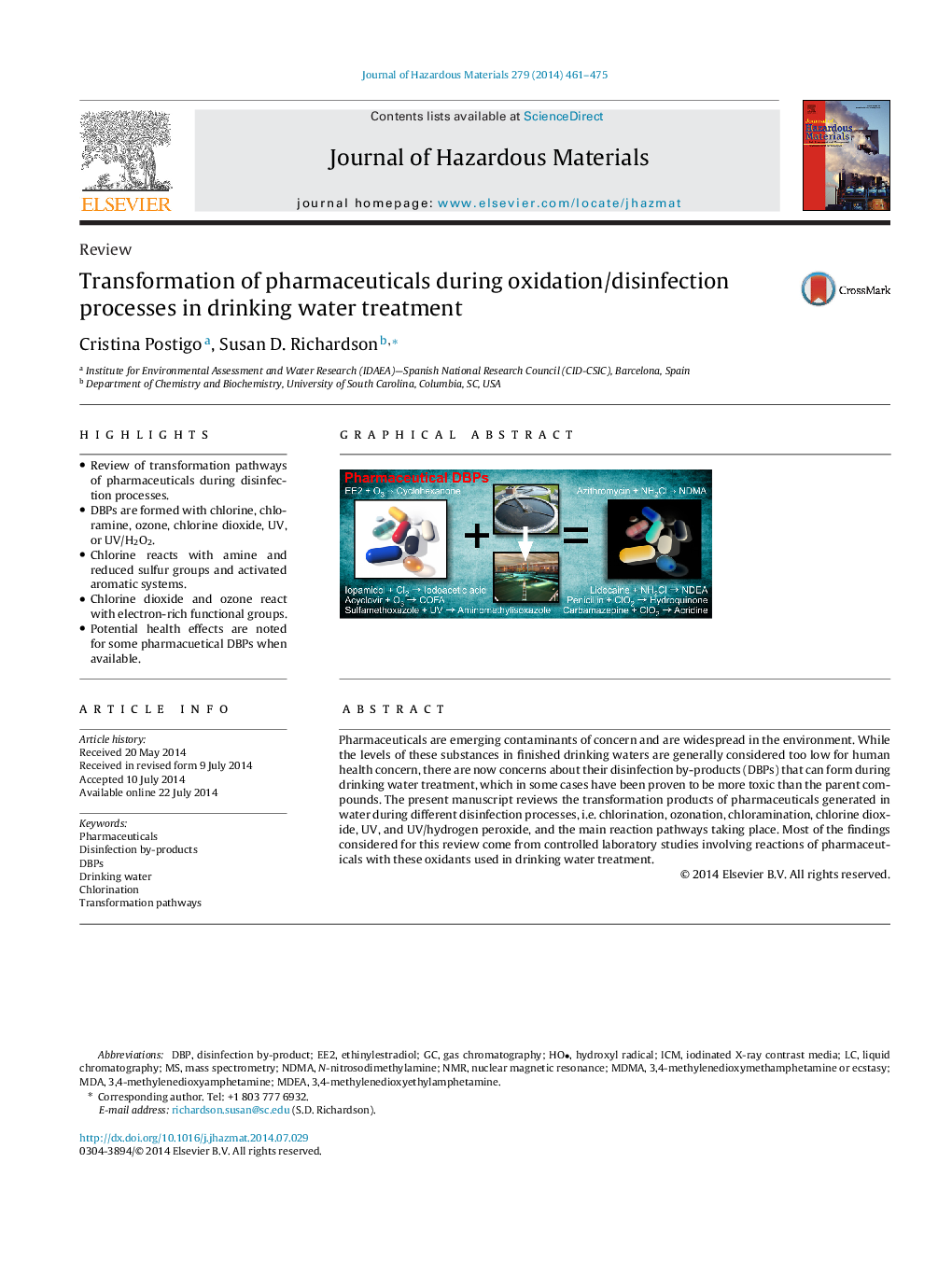| کد مقاله | کد نشریه | سال انتشار | مقاله انگلیسی | نسخه تمام متن |
|---|---|---|---|---|
| 576630 | 1453081 | 2014 | 15 صفحه PDF | دانلود رایگان |
• Review of transformation pathways of pharmaceuticals during disinfection processes.
• DBPs are formed with chlorine, chloramine, ozone, chlorine dioxide, UV, or UV/H2O2.
• Chlorine reacts with amine and reduced sulfur groups and activated aromatic systems.
• Chlorine dioxide and ozone react with electron-rich functional groups.
• Potential health effects are noted for some pharmacuetical DBPs when available.
Pharmaceuticals are emerging contaminants of concern and are widespread in the environment. While the levels of these substances in finished drinking waters are generally considered too low for human health concern, there are now concerns about their disinfection by-products (DBPs) that can form during drinking water treatment, which in some cases have been proven to be more toxic than the parent compounds. The present manuscript reviews the transformation products of pharmaceuticals generated in water during different disinfection processes, i.e. chlorination, ozonation, chloramination, chlorine dioxide, UV, and UV/hydrogen peroxide, and the main reaction pathways taking place. Most of the findings considered for this review come from controlled laboratory studies involving reactions of pharmaceuticals with these oxidants used in drinking water treatment.
Figure optionsDownload as PowerPoint slide
Journal: Journal of Hazardous Materials - Volume 279, 30 August 2014, Pages 461–475
